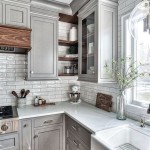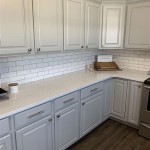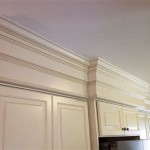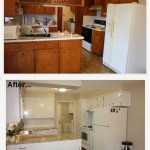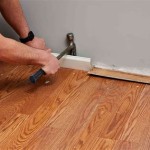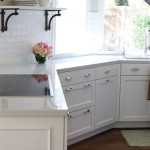Essential Aspects of Cleaning Grease Off Kitchen Cabinet Doors
Maintaining a clean and spotless kitchen is a never-ending task. Grease buildup on kitchen surfaces, especially cabinet doors, is a common issue that can make your kitchen look untidy, attracting dirt and germs.
Cleaning grease off kitchen cabinet doors can be daunting, but it's crucial to keep them grease-free for hygiene and aesthetic reasons. In this article, we'll dive into the essential aspects of cleaning grease off kitchen cabinet doors, ensuring your kitchen remains a clean and beautiful space.
Understanding Grease Buildup
Grease buildup occurs when airborne grease particles, released during cooking, settle on surfaces. Kitchen cabinet doors, being in close proximity to the stove and other cooking areas, accumulate grease over time. These grease particles combine with dust and other pollutants to form a sticky layer that can attract dirt and bacteria.
Choosing the Right Cleaning Solution
Selecting the right cleaning solution is essential to effectively remove grease. Avoid harsh chemicals that can damage the cabinet doors. Instead, opt for mild and degreasing solutions that are specially designed for kitchen surfaces. You can use a mixture of warm water and dishwashing liquid, or a commercial kitchen cleaner specifically formulated to cut through grease.
Cleaning Techniques
Once you have your cleaning solution ready, it's time to tackle the cleaning process:
- Wipe Away Loose Grease: Before applying any cleaning solution, use a clean cloth or sponge to wipe away any loose grease or crumbs from the cabinet doors.
- Apply the Cleaning Solution: Dip a clean cloth or sponge into the cleaning solution and apply it gently to the greased areas of the cabinet doors. Allow it to sit for a few minutes to penetrate the grease.
- Scrub Gently: Use a soft-bristled brush or sponge to gently scrub the greased areas in a circular motion. Avoid using abrasive sponges or brushes that can scratch the cabinet doors.
- Rinse and Dry: Once the grease is removed, rinse the cabinet doors with clean water and dry them thoroughly with a clean cloth or paper towels.
Preventing Grease Buildup
Regular cleaning is essential, but preventing grease buildup in the first place can make your life easier. Here are some tips:
- Use a Range Hood: A range hood helps to extract cooking vapors and grease particles, preventing them from settling on kitchen surfaces.
- Clean as You Cook: Wiping down the stovetop and backsplash after cooking can prevent grease from splattering onto cabinet doors.
- Regularly Clean Cabinet Doors: Frequent cleaning can prevent grease from accumulating and becoming harder to remove.
By following these essential aspects of cleaning grease off kitchen cabinet doors, you can maintain a clean, hygienic, and aesthetically pleasing kitchen. Remember to choose the right cleaning solution, use proper cleaning techniques, and take preventive measures to keep your kitchen cabinets grease-free.

How To Clean Sticky Grease Off Kitchen Cabinets Ovenclean

How To Remove Grease From Kitchen Cabinets 3 Methods Bob Vila

Get Grease Off Kitchen Cabinets Easy And Naturally

How To Clean Kitchen Cabinets Everyday Skate

How To Clean Grimy Kitchen Cabinets With 2 Ingredients

Best Ways To Clean Grease Stains Off Kitchen Cabinets

How To Clean Kitchen Cabinets In A Few Easy Steps Hunker 2024 Cleaners Homemade House Cleaning Tips

How To Clean Kitchen Cabinet Doors

How To Clean Sticky Grease Off Kitchen Cabinets

How To Clean White Kitchen Cabinets 3 Best Ways Avoid Abbotts At Home
Related Posts

